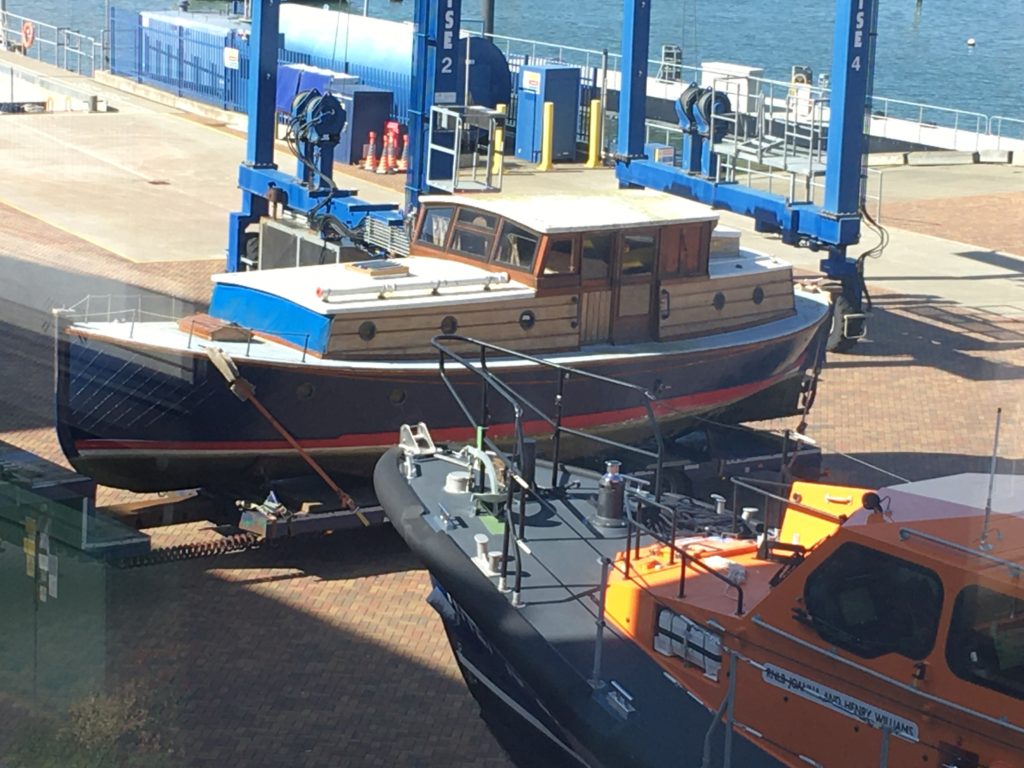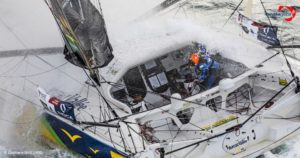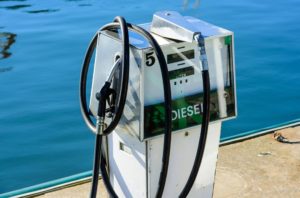Historic lifeboat returns to the RNLI

The historic lifeboat ‘Louisa Heartwell’ is now back in the care of the RNLI, following a period of sanctuary at Chichester Marina. She will be stored at the all-weather Lifeboat Centre in Poole, until a permanent berth becomes available at the historic lifeboat collection in Chatham, Kent.
Built in 1902 by the Thames Iron Works in London, the Louisa Heartwell’s a Liverpool design; a 38ft non-self-righting rowing lifeboat with a power plant of 14 oarsmen, plus a simple lugsail and mizzen sail. She was acquired by Premier Marinas in 2019 to be restored back to her original design.
Originally donated to the RNLI by Miss Emily Heartwell of Upper Holloway, London, she was designated as lifeboat number 495 and based at the busy Cromer lifeboat station on the north coast of Norfolk which, during the early 1900s, was prone to shipwrecks.
During her time with the RNLI, Louisa Heartwell only ever had two coxswains, James ‘Buttons’ Harrison and Henry Blogg. Blogg is famously one of the most highly decorated members in the history of the RNLI, despite never learning to swim. The Louisa Heartwell had been launched 115 times and saved 195 lives before being decommissioned in 1931. Her record is historic for an open rowing lifeboat.
In her civilian life, she was initially converted into a motor yacht and renamed Waiora. Little was known about her new life until she resurfaced as a houseboat under her original name on the Grand Union Canal in Hertfordshire. In 1996, she arrived in Chichester by road and was used as a houseboat until she was acquired by Premier Marinas in 2019.
“We were delighted when the RNLI accepted our donation and took on the refurbishment of Louise Heartwell. She is a little boat with such an amazing story and can now enjoy her rightful retirement,” says Paul Cook, Chichester Marina Manager.
“Now that the Louisa Heartwell is out of the water we have full access around the hull and can further develop our conservation plan based on condition and originality of material,” adds Dr Joanna Bellis, Heritage Interpretation Development Officer at the RNLI. “We know she is in extremely good condition for her age and dramatic operational history and we are looking forward to getting to know the boat in detail. In 1917, Henry Blogg and the Cromer crew needed a remarkable lifeboat they could trust so caring for Louisa 100 years later is an honour for the RNLI.”










